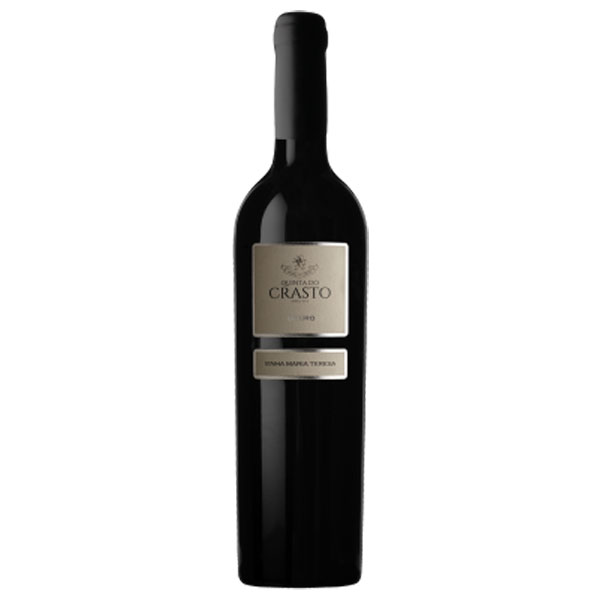Description

Quinta do Crasto, SA is a Portuguese company producing Douro and Porto wines, based in Gouvinhas, municipality of Sabrosa, Northern Portugal. Located in the middle of the Douro Valley, the oldest regulated wine-growing region in the world and also classified as a World Heritage Site by UNESCO in 2001, Quinta do Crasto enjoys exceptional conditions for the production of wines and olive oils of the highest quality.
The Maria Teresa Vineyard, named after the first granddaughter of Constantino de Almeida (founder of Quinta do Crasto), is a century-old vineyard and one of the oldest on the farm. Located on the eastern slope of Quinta do Crasto, with excellent sun exposure and planted on terraces next to the Douro River, at extremely low elevations, Vinha Maria Teresa occupies an area of 4.7 hectares, impressing with its beauty and, above all, its unique characteristics of old vines.
More than 100 years ago, wine producers planted a little bit of everything in the Douro from the varieties they had available, since the ultimate objective was to produce Port Wine and this generous wine had the special characteristic of being the result of several mixed grapes of different varieties. The end result was a vineyard where the planting of grape varieties had been random and diverse, and in which it was possible to find a large number of different varieties.
In 2013, given the advanced age of the Maria Teresa Vineyard, Quinta do Crasto began the genetic mapping of each grape variety that is planted here, with the aim of replacing dead vines with genetically identical varieties, thus perpetuating the «terroir» and the «field blend» of this unique vineyard. The PatGen Vineyards project, as it is called, and developed in partnership with the University of Trás-os-Montes and Alto Douro (UTAD), aims to identify all the grape varieties that are part of the Maria Teresa Vine, and, to date, 54 different varieties have already been identified, including four white grape varieties and one “unknown” red grape variety, that is, a variety with which it has not yet been possible to find any equivalence.
A 100-year-old plant in an old vineyard like the Maria Teresa Vineyard has a significantly low production capacity and will never be able to produce the same amount of grapes as a tree from a new vine. The roots of the Vineyard Maria Teresa vines can reach tens of meters deep, penetrating the schist soil in search of water and nutrients, which increases the competitiveness between each plant and helps to improve the productive performance of each plant. Even so, annually, the average production per tree at Vinha Maria Teresa is around 300 g of grapes.
Despite its low productivity, the Quinta do Crasto Enology team achieves extremely high levels of concentration with the grapes from this vineyard, which allows for world-class wines to be obtained, very complex and full of character, guaranteeing evolution in the bottle for many years.
The quantity of grapes harvested annually from the Maria Teresa Vine is used to produce Douro Quinta do Crasto Reserva Vinhas Velhas wine. In years of exceptional quality, the annual production of grapes from Vinha Maria Teresa is destined to the production of a “monovinha” wine that honors its name: the Quinta do Crasto Vinha Maria Teresa Douro wine. In these special years, Vinha Maria Teresa produces between 2,000 and 8,000 bottles of Quinta do Crasto Vinha Maria Teresa, depending on the exceptionality of each year. The maximum number of bottles of Quinta do Crasto Vinha Maria Teresa Douro wine produced by Quinta do Crasto from Vinha Maria Teresa was, in 2007, 8,001 bottles.
Vineyards like Vinha Maria Teresa are what make Douro wines so special and appreciated around the world. This richness, this most unique part of the Douro vineyards, makes this emblematic heritage an inheritance for everyone that is important to protect and preserve for future generations.





